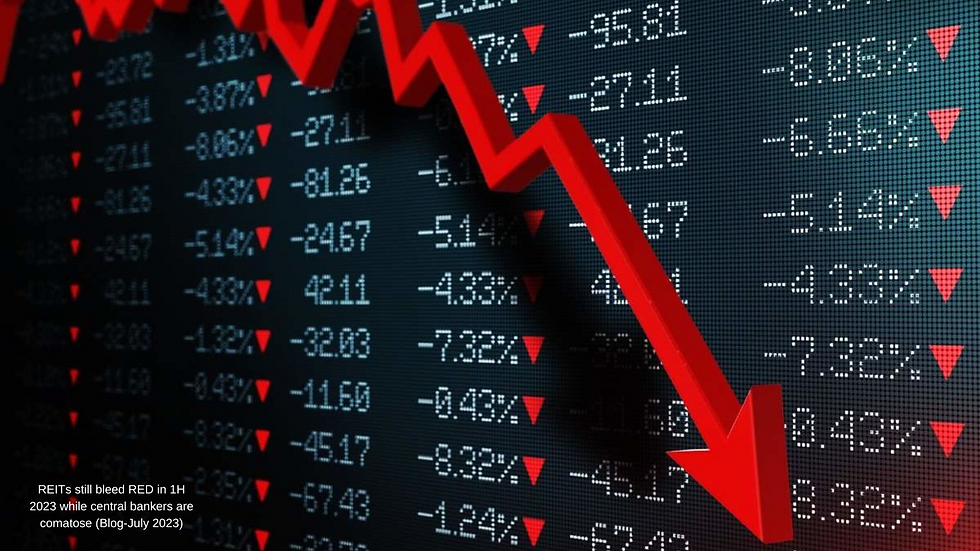PROFITING FROM CRISIS AND ASTUTE RISK TAKING
- by Gabriel Yap

- Nov 18, 2017
- 3 min read
08/2014-
Recent acts of violence by pro-Russian groups in Ukraine has created political upheaval and economic downturn in the wake of the Crimea crisis after Russia annexed the region in March 2014.

To me, this crisis presented a great time to get into the US$-denominated Ukraine bombed-out bonds which went a begging at 80 cents to a dollar. The bond was launched at par due 2021 and fetched a coupon of 7.95%. The country literally went through the “Perfect Storm”, a popular movie starring George Cluny at the same time that Ukraine first sought independence from then motherland USSR or Russia as it is known nowadays.
In the midst of the chaos, predictably, the International Monetary Fund bailed out Ukraine with a US$17 billion financial assistance package. In 5 months, the same 2021 Ukraine bonds soared to close at US$96.55 as end-July 2014.
This was the latest best investment opportunity for me, being an opportunistic investor always on the lookout for mispriced stocks, bonds, real estate or commodities or currencies that are sold off in times of political tensions and crisis.
Of course my opportunistic approach involves a lot of guts and strong heart. However, these guts and strong heart are supported and supplemented by in-depth and on-the-ground research that I do on a daily basis, and more so when a crisis erupts.
For instance, in Ukraine's case, it was clear to me that popular media rhethoric has again misplaced and magnified the fiscal problems of the country, the main fear that propelled the crisis - in reality, Ukraine had only debt/GDP of about 40% compared to the Greece at above 100% during European Meltdown 3 years ago in August 2011. Thus, it would be able to pay any debts owed despite short-term fiscal problems.
To me, crisis times offer a lot of investment opportunities as there are normally a lot of bad press to the point of excessive fear. The latter is likely to cause massive sell-offs in the equity, bond and currency markets. Sell-offs often feed-on themselves which cause further sell-offs and significant drops in less liquid asset class like real estate and mid-cap stocks.
All these will make headlines which normally leave the investor fearful and guessing as events move very fast. Somehow, the human cerebral cortex which deciphers and digest news to arrive at making good investment decisions draw a blank at such times.
To me, most investors generally overlook the fact that crisis times present the urgency to get things done to transform the country's economy – in Ukraine for instance, the parliament quickly passed structural reforms to decrease fiscal deficiencies by raising levies on tobacco and alcohol, hiking electricity prices and streamlining the civil service. Not surprisingly, these measures were quite similar to Hungary, Ireland, Greece, Spain and Portugal just 3 years ago.
Also, most people shy away from visiting crisis-torn countries when the popular media is reporting bad news almost on a daily basis. For me, visiting these countries during crisis (short of fearing for one's safety) and getting a on-the-ground perspective enhanced my investment appetite or guts in making investment bets as they enhance my understanding of the fast changing political landscape and give me better insights into the economic and social aspects. For sure, they help me to understand and gauge how cheap is cheap relative to the country's bonds and equity markets or currencies then. Of course, this is not for the faint-hearted.
After my visits to Greece, Italy and Spain during the 2011 European Debt Crisis, I scooped in on the various sovereign bonds which sold at more than 10% yield. In the case of Greece, the 10-year bonds sold for as low as 23% yield. In just 3 years, the bonds currently sell at less than 6% yield.
Needless, to say the Euro/S$ has climbed from 1.62 to as high as 1.74 before dropping back to 1.67 presently due to the ECB’s latest measure to bring interbank interest rates to negative 0.1%.
3 years hence and most investors appear to have forgotten about the European Debt Crisis. However for me, the Euro bought then at 1.62 affords me my twice-yearly trips to Greece, Spain and Italy to enjoy the Michelin-star restaurants, great wines and fabulous shopping at Prasig de Gracia in Barcelona and in Florence, while awaiting the next crisis to happen.
Indeed, its just nice to Eat, Pray and Love, and may I add, Shop to the famous Julia Robert’s movie which was partially filmed in beautiful Siena with its rolling mountains.




Comments